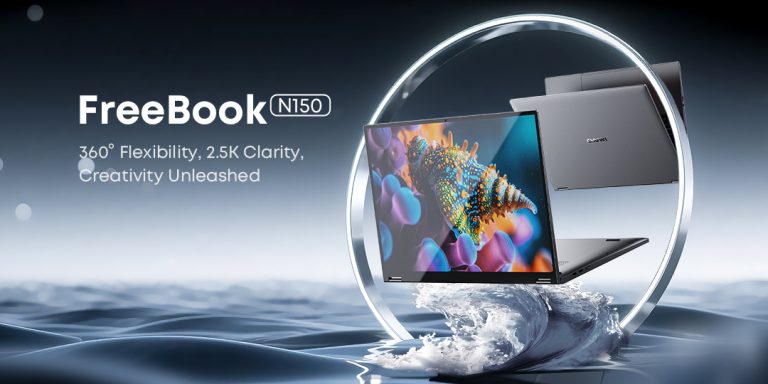Why Do Non-Touch Screen Laptops Still Have a Loyal Following?
Are laptops without touchscreens becoming obsolete in the rapidly changing world of technology, where touchscreens are now commonplace on tablets and smartphones? Remarkably, the response is a firm no. Laptops without touchscreens nevertheless have a devoted user base among those who appreciate their unique benefits. Let’s examine why many people still find these vintage laptops to be appealing.
Superior Typing Experience: A Tactile Benefit
Non-touchscreen laptops provide an unparalleled typing experience for individuals who type a lot. Touchscreens lack the delightful tactile feedback that comes with a real keyboard. Particularly for individuals used to the conventional keyboard layout, this enables faster and more precise typing. Imagine spending hours writing a long document or coding; a non-touchscreen laptop with specific keys becomes an extension of your mind, effectively converting your ideas into digital form.
Consider the Chuwi GemiBook Plus. The full-sized, backlit keyboard on this 15.6-inch laptop has great key travel. The clicky sensation of the keys is pleasant, making them ideal for individuals who long for the fulfilling tactile feedback of a conventional desktop keyboard. Because of this, the GemiBook Plus is perfect for professionals, authors, and students who value a quick and comfortable typing experience.
Eliminate the Impediments of Touchscreen Technology

In terms of performance, the best non-touchscreen laptops frequently outperform those with touchscreens. Non-touch devices can allocate greater processing power and battery life to essential tasks since they do not require extra hardware and software resources for touchscreen operation. The performance will be more fluid, particularly when using taxing apps like sophisticated software or video editing and photo manipulation.
Chuwi’s GemiBook XPro is a prime example of this. These 14-inch laptops offer outstanding performance without the hassle of touchscreen technology thanks to the most recent Intel 12th Gen processors. This enables users to handle resource-intensive tasks effortlessly and without compromising speed or efficiency, pushing the boundaries of their work.
Achieve Value for Money
Because they are usually less expensive than their touchscreen equivalents, non-touchscreen laptops are a great option for anyone who doesn’t need the touchscreen capability, students, or those on a tight budget. Cost differences might be significant, especially when considering more costly models. This frees up more cash for other necessities, like a RAM upgrade or a speedier processor.
In this case, you can also have a well-rounded computer that excels in the areas that matter most to you with a non-touchscreen laptop from Best Buy. For instance, you may decide on a longer battery life to get the most work done during the day, a brighter display to see better images, or a more durable design to last longer. You can choose a non-touch screen alternative to increase your independence.
Non-Touch Screen Laptops are Designed to Last
When it comes to scratches and unintentional touches, non-touch screens typically fare better than touch-sensitive ones. Users who frequently carry their computers around or are prone to unintentional bumps should pay particular attention to this. When looking at a laptop’s touchscreen vs non-touch, the non-touch ensures a seamless and trouble-free user experience because it is less prone to register accidental touches or encounter ghost inputs.
Chuwi laptops are renowned for having strong construction. Some laptops, such as the CoreBook XPro series, have metal chassis construction, which provides more durability than computers with plastic bodies. This results in an extended lifespan for your gadget, which makes Chuwi laptops without touchscreens a dependable purchase.
Preventing Glare and Smudges for a Clearer View

When working in brightly illuminated areas, non-touch screens provide a noticeable benefit in terms of the viewing experience. The variation in screen finishes is the cause of this. Touchscreens frequently have a glossy texture that functions like a mirror, reflecting light sources and causing glare. This can be quite distracting and make it difficult to see what’s on your screen, particularly in brightly lit areas or outside. Conversely, non-touch screens usually have a matte surface.
By dispersing reflected light, this removes glare and produces a clearer, easier-to-read display. Because of this, people who regularly work on the go or in dimly lit environments will find non-touchscreen laptops perfect. Therefore, a non-touchscreen laptop can be the better option if you value a crisp and uninterrupted viewing experience, especially when comparing touchscreen vs. non-touchscreen options.
Enhanced Portability for Mobile Users
The fact that non-touchscreen laptops are less heavy than their touchscreen counterparts is another advantage. Although it may seem like a small matter, every ounce matters to those who frequently travel or carry their computers around for work or school. The overall weight is reduced by the lack of touchscreen electronics and the generally simpler display architecture. This means that you may carry your laptop more conveniently and with less pressure on your shoulders.
Consider yourself as a business professional traveling for meetings or as a student attending lectures. A non-touchscreen laptop in 2024 could be the perfect partner for you. Its lightweight construction and small dimensions make it simple to fit in your backpack, guaranteeing you can continue to be connected and productive wherever you go.
Non-Touch Screen Choices for Different Needs
The adaptability of laptops without touchscreens is what makes them so beautiful. They serve a diverse spectrum of customers, including professionals who value speed and a comfortable typing experience as well as students and cost-conscious shoppers. There exists a non-touchscreen laptop that is ideal for individuals who want a conventional laptop experience, be it writers, programmers, or just someone who appreciates a traditional laptop. Therefore, keep in mind the lasting attractiveness of laptops without touchscreens the next time you’re in the market for one. You may be shocked to discover that a dependable, traditional laptop with a non-touch screen is the ideal choice for you after weighing your priorities and the advantages. Ultimately, in a society fixated on the newest. Sometimes, despite trends, the tried-and-true method still works best.






